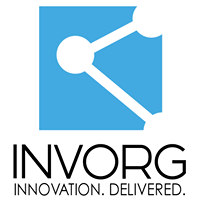Improving the Canadian newcomer experience
How digital transformation is instrumental in improving the Canadian newcomer experience.

Photo by Hermes Rivera on Unsplash
Introduction
For many years Canada has been a place that welcomes newcomers to the country with open arms, open hearts, and open minds. We are proud of the multicultural society we have created and work every day to make it a more welcoming place for anyone who wants to live here. Our economy has thrived on the arrival of newcomers for generations and that trend is only increasing. There is also a demographic shift taking place in Canada. Our average population is becoming older because Canada’s birth rates have been on the decline for many years. This creates a problem because eventually there will not be enough taxpayers to sustain our economy and the services Canadians need. Immigration and welcoming newcomers help solve that problem.
Economic benefits aside, it should be the moral duty of every Canadian to make Canadian newcomers feel welcomed and help them be successful. In this article, we will examine the common struggles Canadian newcomers often face and how organizations that have been at the forefront of easing these struggles for years, can adapt to an increased volume of newcomers through digital transformation.
Being a Newcomer in Canada
Coming to Canada is not an easy process. There are so many hurdles that immigrants need to climb including, the number of immigrants accepted into Canada, challenges getting appropriate documents in their home country, the cost of acquiring the proper documents
needed for immigration, language barriers, and so much more. While navigating each of these hurdles there are often many documents that need to be completed and a lot of the time these documents ask the same questions repeatedly. This makes for a frustrating experience for the newcomer, as well as an inefficient one. Much of the time the newcomer must climb each hurdle by dealing with a different organization which also makes it a very tedious and frustrating process to get all the necessary steps completed.
Many of these frustrations are caused by the fact that the organizations that newcomers need to deal with rarely communicate with each other effectively. For example, sometimes they need to deal with the federal government, but for the federal government to do their job they must receive information from the provincial government in which the newcomer is living, and then the provincial government might be waiting on information from the border services, so when these organizations fail to communicate with each other, it creates a lot of frustration and makes for a poor system.
Problems faced by newcomer organizations in Canada
There are many different organizations at the forefront of helping newcomers get settled and they are all a little different. Some help newcomers find jobs and employment opportunities, some help them get the appropriate documentation, some help them find housing, and many other services newcomers require. There is a lot going on and in order for newcomers to be successful in Canada, these services need to be provided to them with the least amount of friction possible.
These organizations often face many challenges when trying to provide their services. This creates problems not only for the organization but also for the newcomers who are trying their best to be successful by getting the help they need. We are going to take a look at the most common problems faced by newcomer organizations in Canada.
- Increased number of newcomers
One of the main challenges these organizations face is that the number of newcomers coming to Canada is always increasing. Data from Statistics Canada shows that between 2017 and 2019 the number of immigrants coming to Canada increased by over 40,000 people in only two years. That is a very short time frame to have such a large increase in newcomers, and the newcomer’s organizations have felt the impacts of that the most. They are forced to stretch the limited number of resources they have in order to help everyone they can. This often creates backlogs, stress, and makes things even more difficult for the newcomers trying to get help.
- Lack of resources
Most of these organizations are not-for-profit organizations or volunteer organizations that have access to limited resources. Many of them rely on donations, government funding, or fundraising initiatives to fund their efforts. This means that many times they face underfunding and have to work with what they have. Paired with an increase in demand for their services, this creates a real problem.
As well as being underfunded, many of these organizations are using technology that is old and outdated which makes everything worse. They are essentially just trying to make do with what they have which creates a huge loss in productivity, it creates the need for repetitive tasks such as entering data multiple times, and it makes it harder to connect with other third-party services because their technology is so out of date. On top of all of that, these organizations a lot of the time are also understaffed. This huge lack of resources makes it very difficult for these organizations to do their jobs effectively and efficiently and the people who suffer the most are the newcomers trying to get help and be successful.
- Limited digital leadership
Digital leadership is extremely important when you are dealing with newcomers because there are a lot of factors that need to be considered, a lot of steps that need to be taken, and a lot of services that need to be provided. In this day and age, one of the best ways to do that is with the help of technology and having the right skills and knowledge to leverage that technology so it can provide the best solution for you.
In order to gain the right digital leadership, these organizations will need to embark on a digital transformation journey that can help them train the staff they have, help them find the right digital solutions for them, and create long-lasting strategies that will help them continue to be successful in the future
The solution
There are many things that can be done to help achieve a solution to this problem. The lack of digital solutions available to these newcomer organizations really exasperates many of their problems. Technology that is available today can help make these struggling organizations more productive and more efficient which will help solve many of their challenges. We are going to look at how digital transformation can help these organizations find solutions to some of their challenges and help them become better prepared to help newcomers in Canada.
- Eliminating data silos
Data silos are created when organizations fail to communicate efficiently internally or externally. This is usually caused by outdated technology and processes that make it difficult for internal members of the organization to share information or data with each other. When this happens, you end up creating data silos.
Storing data in these “silos” makes it very difficult to share data with other departments, so every department is responsible for getting the data they need on their own. This is extremely inefficient and very frustrating for newcomers because they are forced to share their story or situation with every individual department in an organization instead of just once to the organization as a whole. By eliminating these silos, organizations would become much more efficient and would avoid repetitive tasks like re-collecting, re-entering client data, and storing duplicate data. Digital transformation helps organizations effectively break down these silos and improve internal communication and improve the newcomer experience.
- Consolidating and integrating data needs
Data is extremely important for any organization. It helps organizations see what is working for them and what is not. Most importantly, it gives them a 360-degree view of their clients and what they need. Without effective data management from collecting data to storing and everything in between, there is no way to see how your organization is doing at providing your services. In order for data to be collected and stored efficiently and effectively, it is important that all the data collection systems be integrated so that all of your data can be consolidated and stored in one place where everyone who might need the data can access it. Digital transformation can help organizations consolidate and integrate their data collection and storage in the best way for that organization, so they are increasing their productivity and they have access to usable data to help them improve their services.
- External technology integration
Many of these organizations communicate regularly with third-party and external organizations such as provincial and federal governments. This communication is made much harder when the technology they are using does not integrate well with the external organization. A lot of the time this requires newer technology to be brought in and used so that it is easier to integrate with external systems. Once these newer, more easily integrated systems are adopted, things like communicating with external organizations, reporting things to provincial and federal governments, and communicating with clients, are all made easier and more efficient. The digital transformation journey is all about finding the best digital solutions for your organization including how they can best integrate with the external organizations you have to communicate with.
- Staff training and digital leadership
New technology is only as good as the people who are using it. In order for new technology to be successful and solve problems as intended, staff need to be trained on how to use the technology to the best of their advantage and they need to have leadership who is confident in the new technology and can leverage it in a way that will solve problems for the organization. This training is all a part of the digital transformation journey. During a digital transformation, your organization will take into consideration your people’s current technology skills and the best way to utilize them as well as how to improve your digital leadership through training or additional personnel.
Conclusion
At the end of the day, one of the best ways to help newcomers and newcomer organizations is through digital transformation. These organizations are facing an increase in demand and a decrease in resources. One of the best ways to improve their efficiency and effectiveness is by leveraging technologies so you can do more even if you are short on funding or short on people.
Luckily there are programs and platforms out there that were created to make this transition to technology easier and were created with newcomers and newcomer organizations in mind. NEEP, which stands for Newcomer Experience and Engagement Platform was designed to help newcomer organizations digitally transform and improve their services for newcomers in Canada. To find out more about NEEP and see if this program is right for your organization, visit our website here.
About the authors:
Hannah Hillier

Hannah is a professional content creator and writer. After graduation from the Public Relations program at Cambrian College, Hannah has gone on to start a successful freelance writing career. She is passionate about bringing words to life in a way that makes complicated topics more approachable. From website content to full articles, Hannah loves to find ways to communicate with any audience effectively. She currently lives and works in Sudbury Ontario.
Joseph Edward

Joseph founded INVORG focusing on a client-centric service delivery platform for innovating local organizations, not-for-profits, home and community support organizations, and small to medium-sized businesses. Joseph holds a Chief Information Officer Certification from Carnegie Melon University, USA, and from the US General Services Administration. He is an IT veteran with over 20 years of leadership in technology, including four years as CTO for the city of London.
